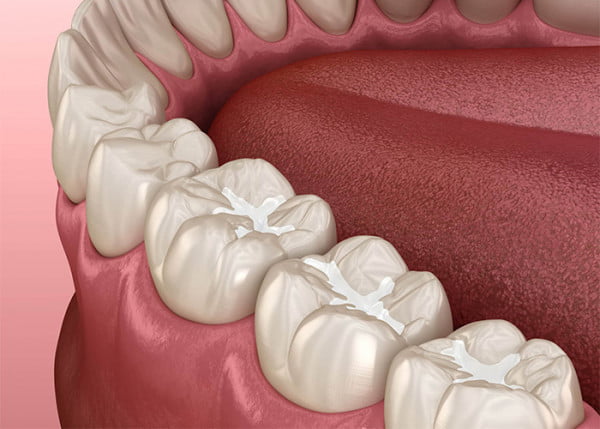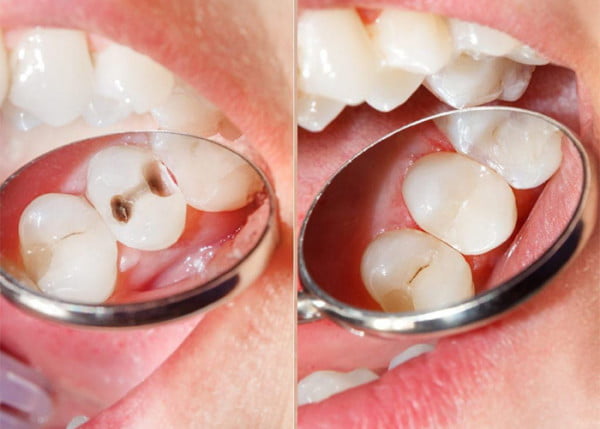Dental fillings are used to repair teeth that have been damaged by decay. Fillings are a common dental procedure that can help to save teeth from further damage. One common question that many patients have is how long dental fillings last. In this blog post, we will discuss the lifespan of dental fillings and what factors can affect their longevity.
Factors Affecting the Lifespan of Dental Fillings
The lifespan of a dental filling can vary depending on several factors. One of the most important factors is the type of filling material used. There are several types of filling materials, including amalgam, composite resin, gold, and porcelain. Amalgam fillings tend to be the most durable and can last up to 15 years or more. Composite resin fillings are not as durable as amalgam fillings and typically last between 5 to 7 years. Gold and porcelain fillings are the most expensive but also the most durable, with a lifespan of up to 20 years or more.
Another factor that can affect the lifespan of dental fillings is the location of the filling. Fillings that are located on the back teeth or molars tend to experience more wear and tear than fillings on the front teeth. This is because the back teeth are used for chewing and grinding, which can put more pressure on the filling and cause it to wear down faster.
Lastly, the oral hygiene practices of the patient can also affect the lifespan of dental fillings. Poor oral hygiene can lead to more decay and gum disease, which can weaken the filling and cause it to fail more quickly. Regular brushing, flossing, and dental check-ups can help to prevent decay and gum disease and prolong the lifespan of dental fillings.
Seemore: How Long Do Dental Implants Last?
Signs that a Filling Needs to be Replaced
Even with proper care, dental fillings will eventually need to be replaced. Some common signs that a filling needs to be replaced include sensitivity to hot or cold temperatures, pain when biting down, visible cracks or wear on the filling, and a change in the color of the filling. If you experience any of these symptoms, it is important to see your dentist as soon as possible to have the filling evaluated.
How Long Do the Different Kinds of Fillings Last?
Silver Amalgam “Mercury” Fillings
Silver amalgam fillings, which are made of a combination of metals including silver, copper, tin, and mercury, are known for their durability. These fillings can last anywhere from 10 to 15 years or more, depending on the location of the filling, the oral hygiene practices of the patient, and other factors.
Gold Fillings
Gold fillings, also known as inlays or onlays, are the most expensive type of filling material but are also the most durable. Gold fillings can last up to 20 years or more with proper care.

Composite Fillings
Composite fillings, which are made of a mixture of plastic and glass, are not as durable as amalgam or gold fillings. These fillings typically last between 5 to 7 years, although some newer composite materials may last longer.
Porcelain (CEREC) Fillings
Porcelain fillings, also known as CEREC fillings, are made of a type of ceramic material that is strong and durable. These fillings can last up to 20 years or more with proper care.
Why do dental fillings fail to last longer?
There are several reasons why dental fillings may fail to last as long as expected. One common reason is poor oral hygiene, which can lead to more decay and gum disease, weakening the filling and causing it to fail more quickly.
Another reason is the location of the filling. Fillings that are located on the back teeth or molars tend to experience more wear and tear than fillings on the front teeth. This is because the back teeth are used for chewing and grinding, which can put more pressure on the filling and cause it to wear down faster.
Lastly, the type of filling material used can also affect its longevity. Some materials, such as amalgam and gold, are more durable than others, such as composite resin. Additionally, older fillings may need to be replaced simply because they have reached the end of their lifespan.
If you have any concerns about the longevity of your dental fillings, it is important to talk to your dentist. They can evaluate your fillings and recommend the best course of action to ensure your oral health and wellbeing.
What Else Impacts How Long Your Fillings Last?
In addition to the type of filling material used, the location of the filling, and oral hygiene practices, there are other factors that can impact the longevity of your dental fillings. These include:
- The size of the filling: Larger fillings may not last as long as smaller fillings.
- The shape of the filling: Fillings with sharp edges or corners may be more prone to chipping or breaking.
- The age of the filling: Older fillings may be more likely to fail.

How Does What I Eat Put My Fillings at Risk?
Eating sugary or acidic foods and drinks can increase the risk of decay around a dental filling. This can weaken the filling and lead to failure. To reduce the risk of decay, it is important to limit your intake of sugary and acidic foods and drinks and to maintain good oral hygiene practices.
Exploremore: Silver teeth crown.
How You Can Help Your Fillings Last Longer
There are several things you can do to help your dental fillings last longer, including:
- Brushing your teeth twice a day with fluoride toothpaste
- Flossing daily
- Using an antiseptic mouthwash
- Avoiding sugary and acidic foods and drinks
- Visiting your dentist regularly for check-ups and cleanings
When Should You See Your Dentist to Check on Your Fillings?
It is important to see your dentist for regular check-ups, even if you are not experiencing any symptoms. Your dentist can evaluate the condition of your fillings and identify any potential issues before they become more serious. If you experience any symptoms such as sensitivity or pain, it is important to see your dentist as soon as possible to have the filling evaluated.
What Are the Alternatives to Dental Fillings?
There are several alternatives to dental fillings, including:
- Dental crowns: Crowns are used to repair teeth that have been damaged by decay or injury. They are more durable than fillings and can last up to 15 years or more.
- Inlays and onlays: Inlays and onlays are similar to fillings but are made of more durable materials such as gold or porcelain. They can last up to 15 years or more.
- Dental implants: Implants are used to replace missing teeth and are a more permanent solution than fillings or crowns. They can last a lifetime with proper care.
If you are considering an alternative to dental fillings, it is important to discuss your options with your dentist to determine the best course of treatment for your individual needs.
Conclusion
In conclusion, the lifespan of dental fillings can vary depending on several factors, including the type of filling material used, the location of the filling, and the oral hygiene practices of the patient. Regular dental check-ups and good oral hygiene can help to prolong the lifespan of dental fillings, but eventually, all fillings will need to be replaced. If you have any concerns about the lifespan of your dental fillings, be sure to discuss them with your dentist.



